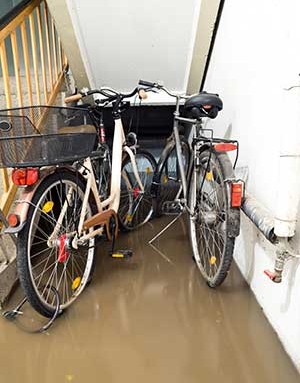We use basements for any number of things: storage, extra bedrooms, game rooms, and even a few man (or woman) caves. That’s because they usually offer us space or solitude that other places in the house don’t allow. And few things are more frustrating than a perpetually moisture-filled or wet basement.
Not only does it put our health in question, it can damage walls, floors, and ruin our treasured possessions. That’s why we need to understand both the causes of wetness, and how to prevent water damage from happening.
Four Common Sources
Water is tricky. It can slip and slither in and through places that we may not even know exist. For basements, there are four common sources of water problems.
- Outside surface water coming in through your foundation walls is a problem that occurs when cracks or crevices develop over time.
- When soil becomes saturated with groundwater the combination creates a hydrostatic pressure that worms its way into your home’s foundation.
- If your perimeter foundation drain system is connected to a municipal sewer system, you may be getting water damage from a nearby storm sewer water system.
- Drains located in lower levels of your home can overflow from municipal storm/sanitary sewer systems.
The big question in a damp basement is whether or not it’s a one-time offense, or if it’s going to be a reoccurring problem.
Problems to Look For
If this does happen to be a first-time occurrence, there are a few steps you should take when looking for the problem.
First, check to see if your gutters are blocked with fall leaves. Not only should this be a routine check, it’s a major factor in basement leakage. Make sure your downspouts are fully clear and also give enough distance for water to run away from your home. If they don’t effectively push water away from your home, you’re just funneling it right into your foundation.
Also, don’t forget to check paved areas around the home. Settling over time and water flow can cause paving to shift and send excess water to your foundation. If this happens, fix or replace the paving so that it slopes away from the home.
Finally, check the ground around your home for newly formed depressions, especially near foundation walls. If necessary, fill them in with dirt so water drains away. This is especially important with sandier soil that allows saturation. Replace loose or sandy soil with a clay-type soil for best results.

